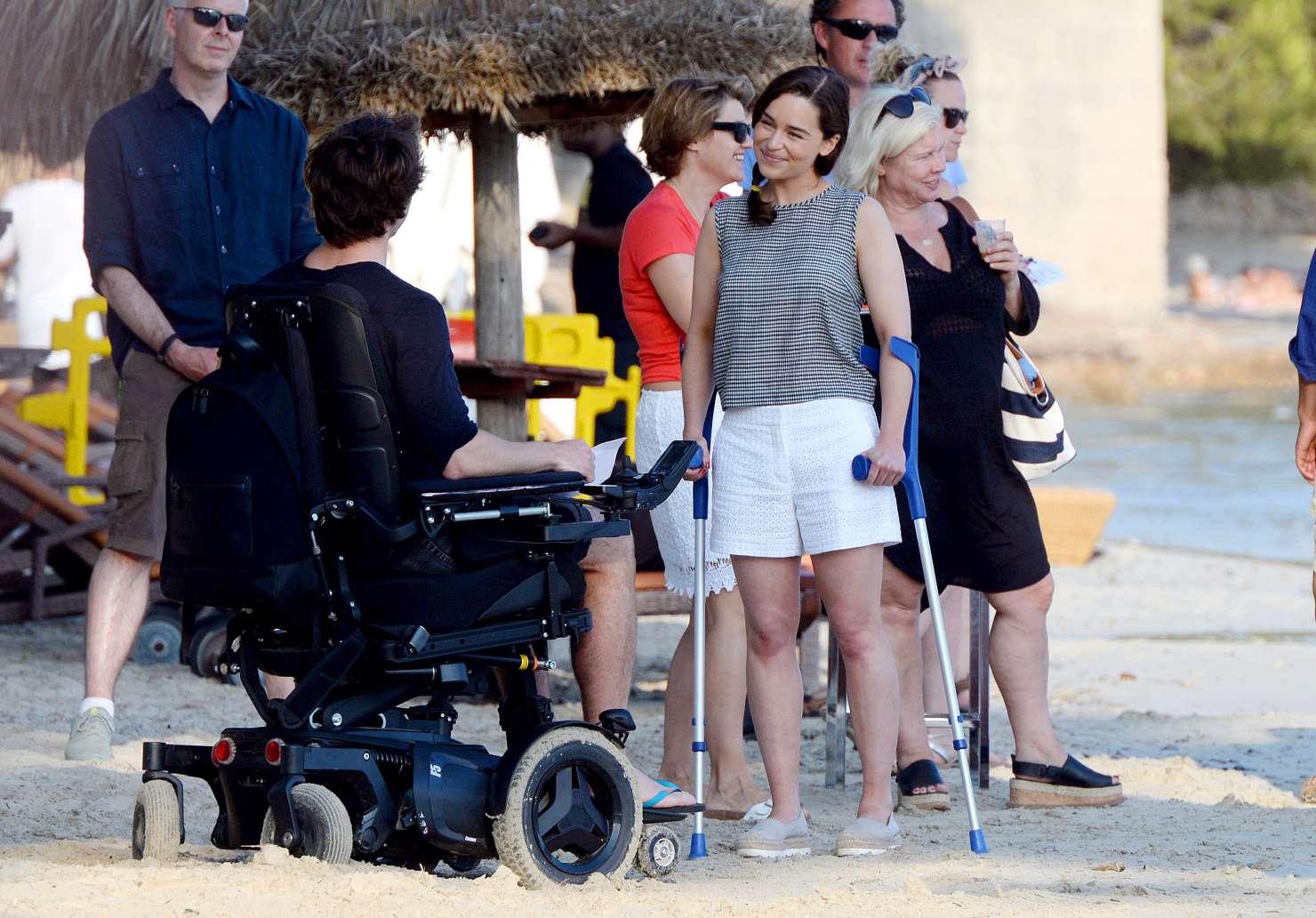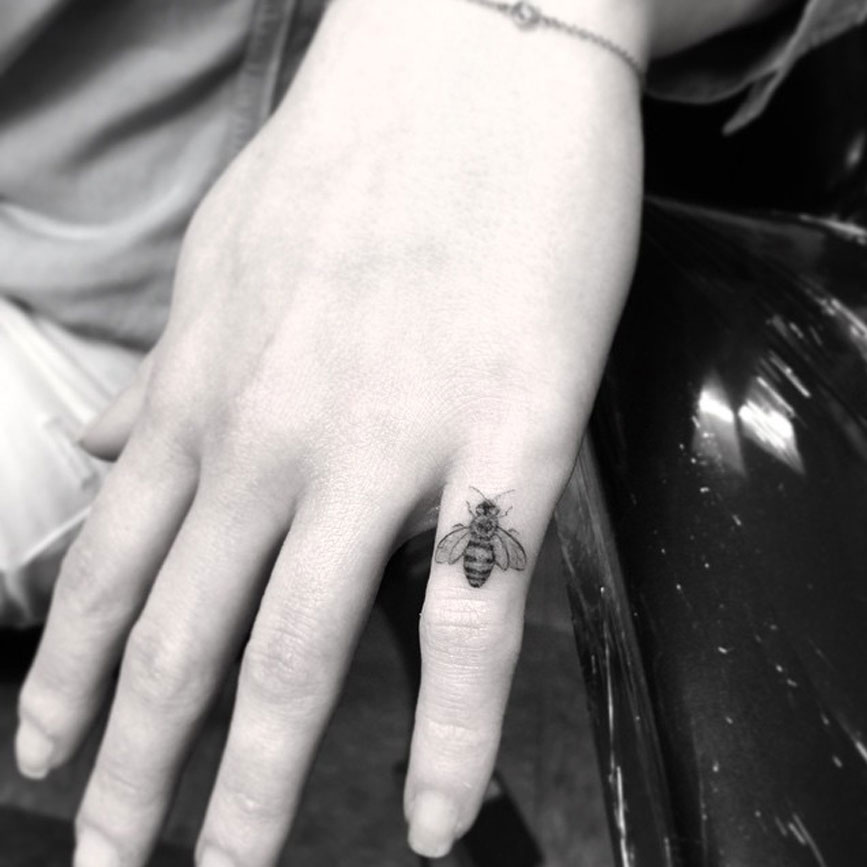How is “Me Before You” different than the book?
Quick Answer: Because author Jojo Moyes wrote the screenplay for the adaptation of her novel, “Me Before You” (2016) sticks very closely to its source material. Most of the changes that were made during the transition were minor. But other changes, although insignificant at first glance, had resounding effects on the plot and on the story’s message.
Fans of Me Before You (2016) were overjoyed that the film adaptation was penned by Jojo Moyes, author of the original novel, but that doesn’t mean that everything about the story stayed the same. Film and print are two mediums with many large, inherent differences – for a story to go from one to the other, it must adapt. While Me Before You was mostly faithful to the novel, there are a few changes that had to be made in order to bring Lou and Will to the silver screen. (Warning: spoilers ahead.)

Sam Claflin and Emilia Clarke on the set of Me Before You (2016)
1. Will’s sister Georgina is cut out of the story. She was a minor character in the book, and even Moyes said that “what we [the production team] worked out over a period of months was that Georgina wasn’t really adding anything to the story.” However, this changes the way that Lou finds out about Will’s plan to end his life. In the novel, Georgina tells her, whereas in the film she overhears Will’s parents arguing about it.
2. Speaking of Will’s parents, the film version of Stephen Traynor is not having an affair. In the book, Lou spots the elder Mr. Traynor with another woman. When she tells Will what she saw, he is unsurprised. According to Buzzfeed, although the affair was shot, it was cut out in editing to keep the focus on the story on Will and Lou.

Charles Danse and Janet McTeer in Me Before You (2016)
3. Another way that the film puts the focus on Will and Lou is by telling the story from only Louisa’s point of view, whereas the book switches points of view between a few different characters. By showing other character’s perspectives, the book was able to show the broader effects of Will’s disability and his choice. Limiting the point of view allows audiences to really delve into Lou and Will’s relationship, but it robs audiences of a more nuanced perspective on the situation.
4. Speaking of losing nuance, Lou’s relationship with Patrick was simplified in the film. In the movie it was surprising to learn that Lou and Patrick had been together for seven years, since their incompatibility seemed so glaringly obvious. But in the book you learn that Patrick was not always the intensely driven workout-aholic that we meet at the story’s beginning. In the book they even move in together, which makes their relationship – and their subsequent breakup – more serious. This changes the plot even further because when Patrick and Lou break up she moves out of the flat that they share and moves in with the Traynors. The larger alteration that underlies these omissions is that the film minimizes Lou’s life before Will.
5. Although the film did cut out a lot of Patrick’s role, it also did him a huge favor – the film makes Patrick less of a jerk than he is in the book. In the original story, Lou and Patrick are closer, so she confides in him Will’s plans to go through with an assisted suicide. Later, out of jealousy, Patrick leaks this news to the press. This results in a huge media storm and a lot of backlash for Lou and for Will’s parents after Will goes through with his decision.

Matthew Lewis as Patrick in Me Before You (2016)
6. One of the thornier issues that the film neglects is Lou’s sexual assault in a maze by the local castle when she was younger. Moyes has gone on the record explaining how it was difficult to adapt that plot point for film while maintaining the tone of the story. “The problem we had with it is in the book it’s almost a throwaway line,” she explains. “There is no way to do that visually because the moment you go into the maze or you express anything about the horror of that evening, it becomes a much bigger and weightier thing and you can’t do that quickly and be respectful to the topic.” By not including this in the film we lose the emotional scene where Lou tells Will about the assault, deepening their bond. However this large omission actually helps Lou’s character feel more original and less defined by the attack. In the book, the assault is used as a way to explain most aspects of Lou’s personality, from the fact that she’s a homebody to the quirky way that she dresses. Leaving this plot point out allows Lou to be a strong and distinctive individual all on her own, without a traumatic backstory.
7. Lou and Will don’t go get tattoos together, although actress Emilia Clarke did go and get Lou’s bumblebee tattoo in honor of the film.


Images from @emilia_clarke and tattoo artist @dr_woo_ssc
8. Unlike the book, the film doesn’t discuss the larger “right to die” argument. In the book, Lou joins a chatroom for people with quadriplegia to figure out how to better help Will – and possibly how to convince him to live. She finds both people questioning whether she has a right to play a role in his decision and people with quadriplegia who are still living happy and full lives. Although these characters are unnamed and do not play a large part in the story, they fundamentally alter the story’s discussion of a serious topic. Because the movie leaves out these stories, however minor they are, it simplifies the issue in a way that many have found offensive and harmful to the disabled community.

